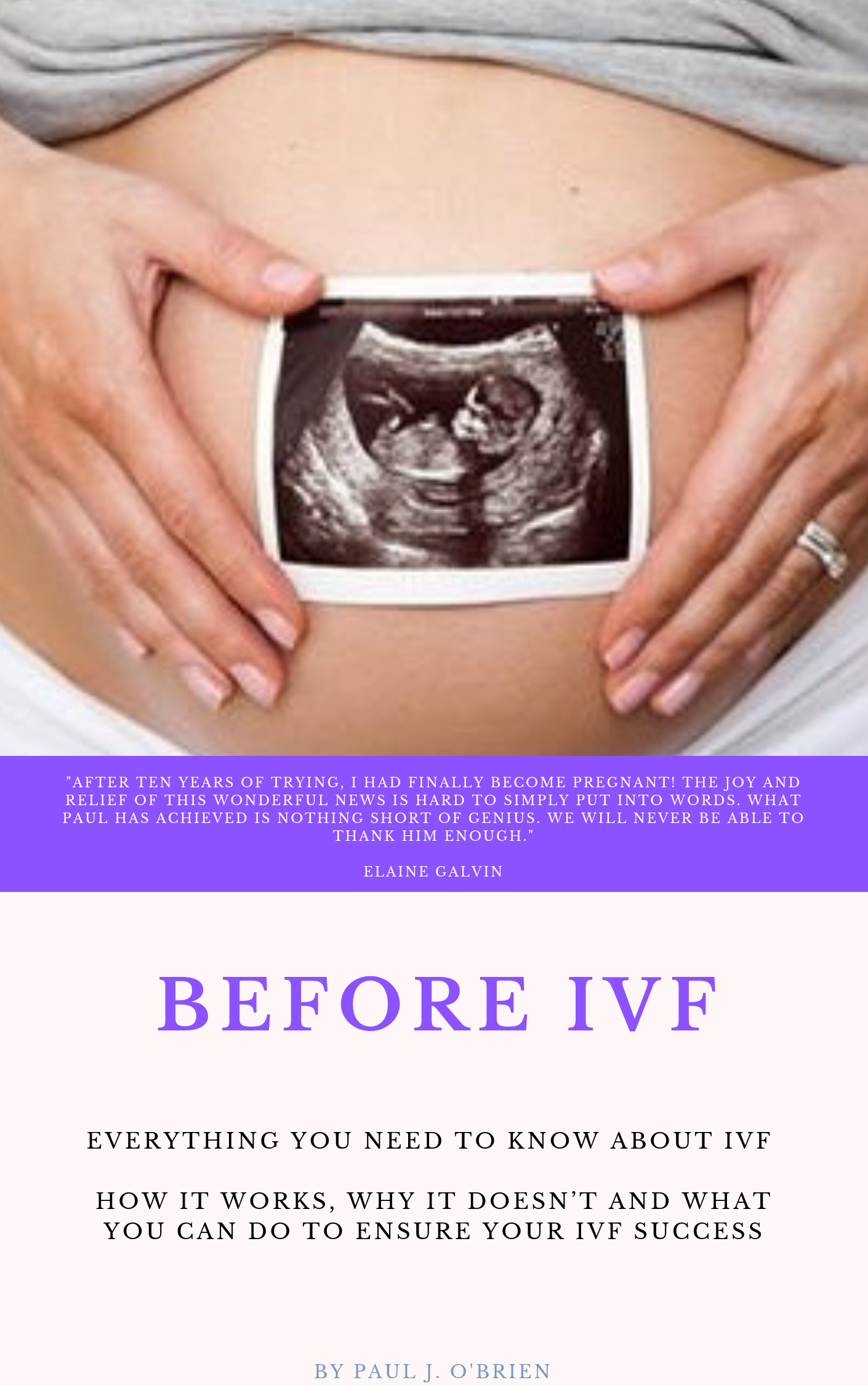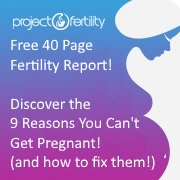Getting Pregnant with Endometriosis
By Paul J.O'Brien B.A., N.C.E.H.S., Dip. Acu., Adv. Dip. OBB, Cert Clin. Med, Cert.CHM, Pn1, PN-SSR, PN-NCA, M.AFPA, M.ETCMA, M.C.Th.A.
Getting Pregnant with Endometriosis is a serious concern for many - in fact, studies show that approximately 25%-50% of women with fertility issues suffer from endometriosis and, further, that 30%-50% of women with endometriosis are sub-fertile, meaning they may have trouble getting pregnant (1,2).
But this can be fixed. Naturally.

One recent study investigating the effects of traditional treatment on just the pain of endometriosis alone found that "The total effective rate ('cured', 'significantly effective' or 'effective') for auricular acupuncture and Chinese herbal medicine was 91.9%". (3)
And if such an incredible option is available, why not just clear up the Endometriosis naturally? That way you never have to worry about getting pregnant with Endometriosis. :-)
In this article series on Getting Pregnant with Endometriosis, I'm going to;
- Explain How the Period Works
- Explain If You Are At Risk of Endometriosis?
- What is Endometriosis?
- What are the signs of Endometriosis?
- The causes of Endometriosis, and then I'll tell you about...
- The best next steps to take to clear up Endometriosis naturally. :-)
Women are blessed with the gift of child bearing. This also means having the burden of monthly periods and everything it entails. Aside from pregnancy and giving birth, the monthly period is one of the most intricate, memorable, and (sadly for many), irritating experiences of a woman's life.
The Problem of Getting Pregnant with Endometriosis
Endometriosis can be the cause of woman's infertility. 30%-50% of women with endometriosis are sub-fertile.
Endometriosis may be related to infertility in several ways.
- Scar tissue from endometriosis can, possibly, form around the ovary and restrict the available surface area of the ovary for egg release.
- Adhesions affecting the fallopian tubes may interfere with their ability to pick up an egg released by an ovary and transport it to the uterus.
- Occasionally, endometriosis will form inside the fallopian tube, resulting in blockage and making fertilization impossible.
- Increased macrophage activation. Macrophages are large cells that act as janitors in your body, cleaning up the mess of dead and damaged cells, bacteria and other foreign substances. Part of their function is to actually kill off sperm that get lost and instead of moving up to the fallopian tubes try to swim into the abdomen. The macrophages prevent this. However in the case of endometriosis more macrophages are present and they can become overactive killing off correctly moving sperm before they reach the fallopian tubes. Should your partner have a low or borderline low sperm count, this could be more than enough to prevent ANY sperm reaching the egg for fertilization.
- Increased Cytokines. Cytokines are chemicals that are toxic to sperm and horribly, embryo's. Macrophages release these chemicals. The more macrophages the greater the chance there will be increased cytokines that will destroy sperm, and should they fertilize an egg, could kill the developing embryo.
- Increased Mucus. In the discussion on the types of endometriosis, I mention that superficial endometriosis is more connected to infertility. This is because that type of endometriosis, contains mucus producing glands that cover the fimbriae (the connection between the ovary and the fallopian tubes) with a sticky mucus that prevents the mature egg moving into the tube.
- Tubal Weakness. Endometriosis has been shown to cause and increase in the level of two hormones, prostaglandins PGE2 and PGF - this results in reduced patency and flexibility of the fallopian tubes. This in turn can affect the movement and release of a mature egg.
- Ovulation Failure. Endometriosis is associated with a failure of a mature egg to break free from the follicle it is contained in. This is called ovulatory disturbance luteinised unruptured follicle syndrome (LUFS). This causes a failure of the corpus luteum and thus low levels of progesterone are released.
Finally, on a very simple and practical level, women who experience deep pain during intercourse may choose to have intercourse less often, thus reducing the likelihood of getting pregnant with endometriosis.
In some women, endometriosis causes no symptoms or mild symptoms and does not need to be treated at all. However, untreated endometriosis can continue to worsen, so these women should continue to have regular examinations to monitor the condition.
If endometriosis is causing symptoms or getting pregnant with Endometriosis is not happening, western medicine offers several treatment options are available like medication, surgery or, in extreme cases a hysterectomy (where pregnancy would then be impossible). I'll cover treatment options from both a Western Perspective and Eastern Perspective in a moment, but first, I want to go back to basics and explain from the start exactly what endometriosis is and then look at getting pregnant with endometriosis.
Getting Pregnant with Endometriosis: How the Period Works
Menstruation, or period, is a woman's monthly bleeding. It is the preparation of a woman's body for pregnancy. Each month blood fills and lines the uterus in order to provide a stable, nutrient rich soil in which life can grow and develop. Without a pregnancy though, the uterus sheds its blood lining, in order to bring new, fresh oxygen rich blood in for a new layer. In addition, the blood that is shed each month includes tissue from inside the uterus or womb. The old blood passes out of the body via the vagina.
Periods usually start at age 12 and continue until menopause, at about 50.
Menstruation is controlled through a complex series of chemical reactions and metabolic processes in the body. It begins with the initial creation of blood in the body. Then through the work of various hormones such as oestrogen which is used to trigger the formation of the lining and the development of the eggs in the ovaries, and progesterone necessary to hold on to that lining (and a developing pregnancy if there is one).
These hormones and the physical work of building and losing blood can result in certain changes that happen during a woman's menstrual period. Some women become irritated, depressed, and emotional. Physical changes also happen before and during menstruation like having swollen breasts, feeling bloated, headaches, and back pains. Each of these is diagnostically relevant in terms of Fertility - for more on that read Signs of Infertility.
Beyond these symptoms though there are women who suffer severe pain during their menstrual period that could be one of the symptoms of endometriosis. We'll look at some of those signs of endometriosis in a future article, but first, let's examine the risk.
Are You at Risk of Developing Endometriosis?
Are You at Risk of Endometriosis?
Studies have identified 8 primary risk factors that would suggest a greater chance of developing endometriosis. Risk factors for endometriosis include:
- Low BMI (4,5,6,7)
- Alcohol Intake (8,9)
- Smoking (10,11)
- Low Vitamin D levels (12)
- Low dairy diet (13)
- Genetics (14)
- African American ethnicity (15, 16)
- Early or late menarche (start of the period) (17)
This isn't to say you have endometriosis if you're on that list above, but if you fall into a few of these categories you have a greater risk of endometriosis than not and it could be difficult getting Pregnant with Endometriosis.
To confirm if you may have endometriosis and possible fertility issues surrounding that, we'd look at other signs and symptoms, which I'll go through with you in the next article...
Click here to learn about the symptoms and signs of Endometriosis...
Your Next Best Step to Eliminate Endometriosis...
If you want to go to the next level of detail and look at in-depth self-treatment, you should check out Before IVF: Everything You Need to Know ABout IVF. How it works, why it doesn't and what you can do to ensure your IVF Success. Written from a holistic viewpoint I go into greater detail about what causes Endometriosis, how to prevent, diagnose the different types and understand your body and your health. More than that I'll walk you through, step by step on how to diagnose the exact type of endometriosis you have, how it will affect your fertility - but, most importantly, what to about it! Packed with pressure point exercises, self massage techniques, foods, recipe guides and more, this is the best way to avoid IVF and get pregnant with Endometriosis, naturally.
If you’re trying for a family or dealing with Endometriosis and want to eliminate those symptoms and give each cycle your best the best possible shot of success and dramatically improve your fertility and reproductive health, to have a happy healthy baby, then …
- Download my Free "9 Reasons You Can't Get Pregnant" Guide to learn more about what complications may be present and what you can do to fix them! (I cover Endometriosis here!)
- Subscribe to my newsletter to keep up to date with the new articles, how to guides, fertility recipes and more.
- Get Your Copy of "Before IVF: How it works, why it doesn’t and what you can do to Ensure Your IVF Success!". Over 430 pages, this guide provides answers to every question you could ask about fertility and how to maximise your reproductive health. It will help you beat the numbers in IVF and better still may help you conceive without ever having to go through IVF! Including how to get pregnant with Endometriosis!
- Contact me with your particular questions and concerns and I'll do my best to help. :-)
Footnotes
(1) The Practice Committee of the American Society for Reproductive Medicine. Endometriosis and infertility: a committee opinion. Fertil Steril 201298:591-8
(2) Missimer SA, Hankinson SE, Spiegelman D, et al. Incidence of laparoscopically confirmed endometriosis by demographic, anthropometric, and lifestyle factors. Am J Epidemiol 2004; 160:784-96
(3) Zhu, Xiaoshu, Kindreth D. Hamilton, and Ewan D. McNicol. "Acupuncture for pain in endometriosis." Sao Paulo Medical Journal 131, no. 6 (2013): 439-439.
(4) The Practice Committee of the American Society for Reproductive Medicine, Endometriosis and Infertility; a committee opinion. Fertil Steril 2012; 98:591-8
(5) Missmer SA, Hankinson SE, Spigelman D, et al. Incidence of Laparoscopically confirmed endometriosis by demographic, anthropometric, and lifestyle factors. Am J Epidemiol 2004; 160:784-96
(6) Shah DK, Correia KF, Vitonis AF, et al. Body Size and Endometriosis: results from 20 years of follow-up within the nurses' health study II prospective cohort, Hum Reprod 2013;28:1783-92
(7) Hediger ML, Hartnett HJ, Louis GM. Association of endometriosis with body size and figure. Fertil Steril 2005; 84:1366-74
(8) See 1
(9) See 2
(10) See 1
(11) See 2
(12) Harris HR, Chavarro JE, Malspeis S, et al. Dairy Food, calcium, magnesium, and vitamin D intake and endometriosis: a prospective cohort study. Am J Epidemiol 2013; 177:420-30
(13) Ibid
(14) Dalsgaard T, Hjordt Hansen V, Hartwell D, et al. Reproductive prognosis in daughters of women with and without endometriosis. Hum Reprod 2013; 28:2284-8
(15) See 1
(16) See 2
(17) Farquhar C. Endometriosis. BMJ 2007; 334:249-53



New! Comments
Have your say about what you just read! Leave me a comment in the box below.